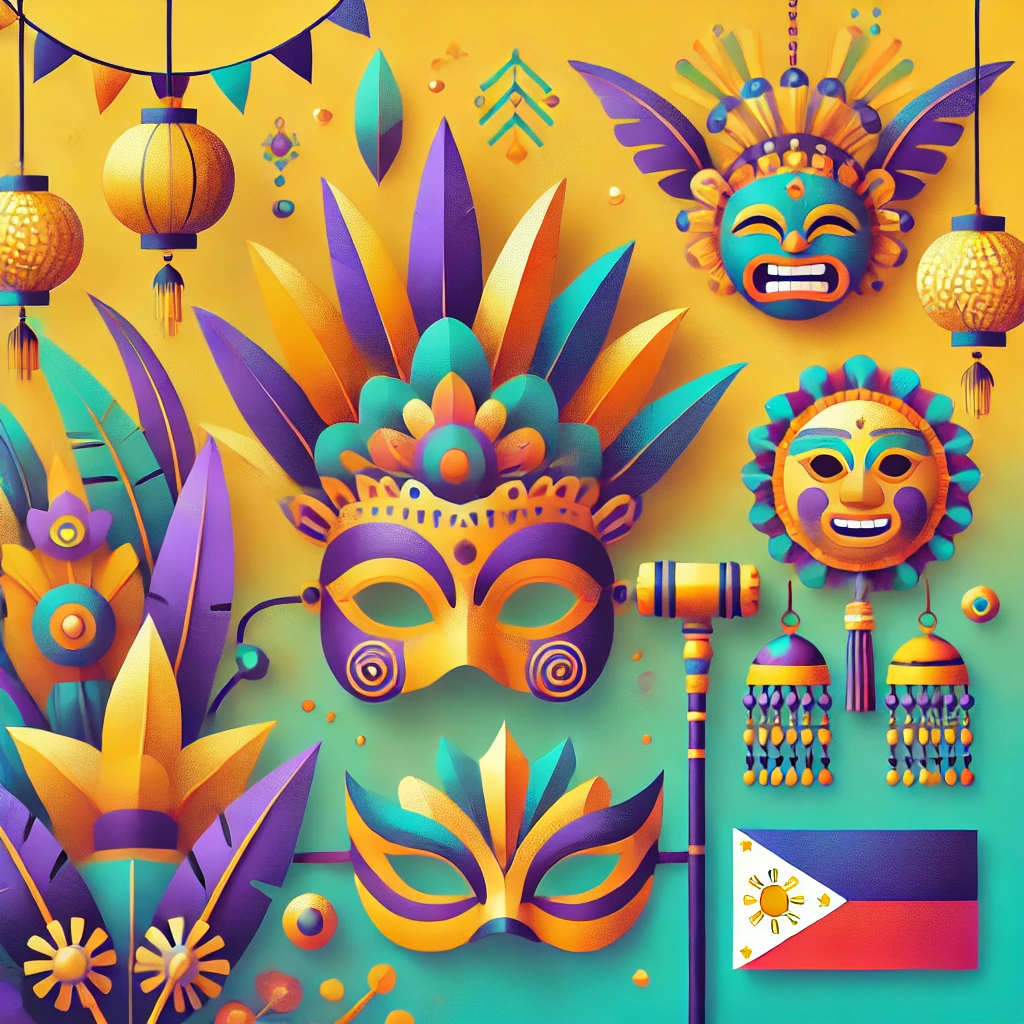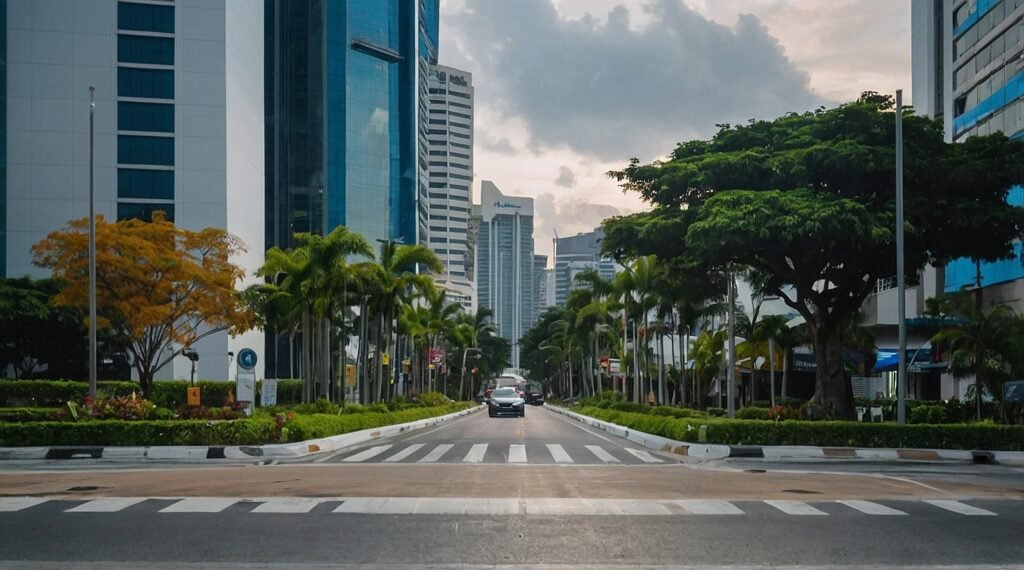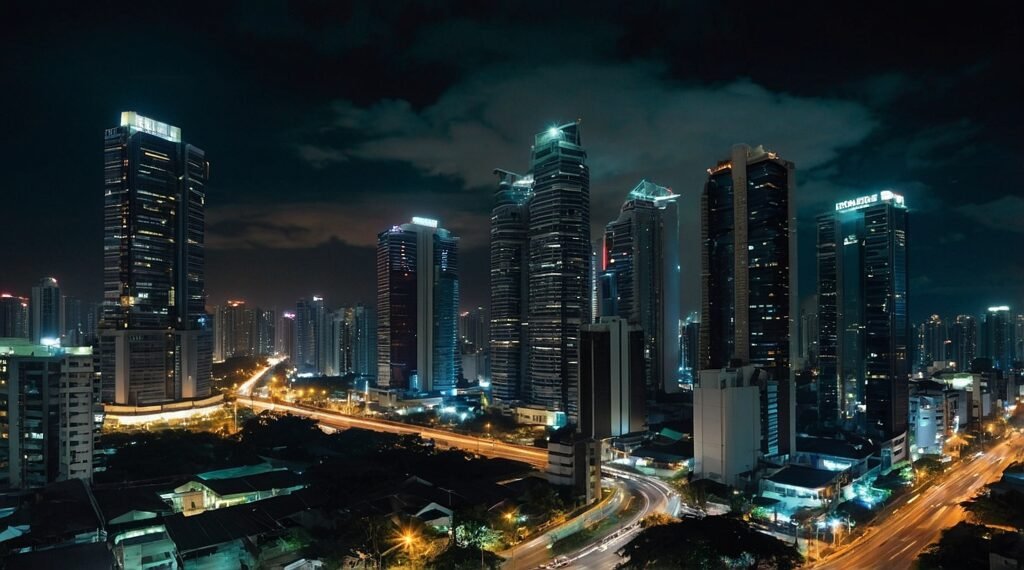The Philippines, an archipelagic nation comprising over 7,000 islands, is renowned for its vibrant culture and rich traditions. One of the most striking manifestations of this cultural heritage is the country’s plethora of festivals, or “fiestas,” that occur throughout the year. These celebrations, deeply rooted in history, religion, and local customs, offer a fascinating glimpse into the Filipino way of life. From colorful street parades to solemn religious processions, Philippine festivals showcase the nation’s diversity, creativity, and unwavering spirit of community. This comprehensive guide will explore some of the most notable festivals across the Philippines, providing insights into their origins, significance, and unique characteristics. By delving into these cultural celebrations, we can gain a deeper understanding of the Filipino identity and the values that bind this diverse nation together.
The Significance of Festivals in Philippine Culture
Festivals play a crucial role in Philippine society, serving as more than mere entertainment or tourist attractions. These events are deeply ingrained in the fabric of Filipino culture, reflecting the nation’s history, religious beliefs, and local traditions. The importance of festivals in the Philippines can be attributed to several factors. First and foremost, they serve as a means of preserving and passing down cultural heritage from one generation to the next. Through participation in these events, young Filipinos learn about their roots, traditional practices, and the values that have shaped their communities for centuries. Additionally, festivals foster a strong sense of community and social cohesion, bringing people together to celebrate shared beliefs and experiences. This communal aspect is particularly significant in a country known for its strong emphasis on family and social bonds. Moreover, Philippine festivals often have economic implications, boosting local tourism and providing opportunities for small businesses and artisans to showcase their products and skills. By understanding the multifaceted role of festivals in Philippine society, we can better appreciate their enduring popularity and cultural significance.
A Calendar of Major Philippine Festivals
The Philippines boasts a diverse array of festivals throughout the year, each with its own unique character and significance. While it would be impossible to cover every single festival in the country, this section will highlight some of the most prominent and widely celebrated events in the Philippine festival calendar.
January: Sinulog Festival
The Sinulog Festival, held in Cebu City on the third Sunday of January, is one of the grandest and most popular festivals in the Philippines. This vibrant celebration honors the Santo Niño (Holy Child Jesus) and commemorates the Christianization of Cebu. The festival’s highlight is a colorful street parade featuring intricate costumes, lively music, and the distinctive Sinulog dance, characterized by a two-steps-forward, one-step-backward movement that mimics the current of the Cebu River. The Sinulog Festival attracts millions of visitors each year, making it a significant cultural and economic event for the region.
February: Panagbenga Festival
Held in Baguio City, the summer capital of the Philippines, the Panagbenga Festival is a month-long celebration of flowers and Cordilleran culture. The term “Panagbenga” comes from the Kankanaey word meaning “season of blooming.” This festival, which began in 1995, showcases Baguio’s floral heritage and the rich traditions of the indigenous peoples of the Cordillera region. The main events include a grand street parade featuring floats adorned with flowers, street dancing competitions, and a flower market exhibition. The Panagbenga Festival not only promotes tourism but also raises awareness about environmental conservation and the preservation of indigenous culture.
March/April: Moriones Festival
The Moriones Festival takes place during Holy Week on the island of Marinduque. This unique celebration reenacts the story of Longinus, the Roman centurion who pierced Jesus’ side during the crucifixion and later converted to Christianity. Participants, known as “Moriones,” don elaborate masks and costumes resembling Roman soldiers. The week-long event includes street performances, religious processions, and a dramatic chase culminating in the capture and mock beheading of Longinus. The Moriones Festival is a prime example of how Philippine festivals often blend religious devotion with theatrical spectacle.
May: Flores de Mayo and Santacruzan
May in the Philippines is marked by the Flores de Mayo (Flowers of May) celebrations, which honor the Virgin Mary. Throughout the month, communities gather to offer flowers and prayers at local churches. The culmination of these festivities is the Santacruzan, a religious-historical pageant that typically takes place on the last day of May. The Santacruzan features a procession of young women dressed in elaborate gowns, each representing various biblical and historical figures. This festival beautifully combines religious devotion, historical commemoration, and Filipino pageantry.
June: Pahiyas Festival
The Pahiyas Festival, celebrated in Lucban, Quezon Province, is an agricultural thanksgiving feast honoring San Isidro Labrador, the patron saint of farmers. Held annually on May 15, this colorful festival sees local houses adorned with vibrant decorations made from rice wafers, fruits, vegetables, and handicrafts. The most distinctive feature of the Pahiyas is the use of “kiping,” leaf-shaped wafers made from rice paste and food coloring, which are arranged in chandelier-like formations called “aranya.” The Pahiyas Festival not only showcases the region’s agricultural bounty but also demonstrates the Filipino’s artistic creativity and communal spirit.
August: Kadayawan Festival
Celebrated in Davao City, the Kadayawan Festival is a thanksgiving celebration for nature’s bountiful harvest. The term “Kadayawan” comes from the friendly greeting “Madayaw,” which means good, valuable, or beautiful. This week-long festival features street dancing, floral float parades, cultural shows, and agricultural exhibits. The Kadayawan Festival highlights the cultural diversity of Davao, showcasing the traditions of the region’s indigenous peoples alongside modern urban culture. It also promotes Davao’s agricultural products, particularly its famous durian fruit.
October: MassKara Festival
The MassKara Festival, held in Bacolod City, is known for its vibrant masks and street dancing. The festival’s name is a portmanteau of “mass” (a multitude of people) and the Spanish word “cara” (face). Initiated in the 1980s during a period of economic crisis and tragedy, the MassKara Festival aimed to uplift the spirits of the local people. Today, it has evolved into a major tourist attraction, featuring masked street dancers, beauty pageants, food festivals, and concerts. The smiling masks that are the hallmark of this festival symbolize the resilience and optimism of the Filipino people in the face of adversity.
December: Giant Lantern Festival
San Fernando, Pampanga, comes alive in December with the Giant Lantern Festival, locally known as “Ligligan Parul.” This dazzling event showcases enormous, intricate lanterns that can reach up to 6 meters in diameter. These lanterns, made from a variety of materials including capiz shells, LED lights, and steel frames, compete for the title of most beautiful and innovative design. The festival has earned San Fernando the nickname “Christmas Capital of the Philippines” and attracts visitors from all over the country and beyond. The Giant Lantern Festival is a testament to the ingenuity and craftsmanship of Pampanga’s artisans and the Filipino people’s love for festive celebrations.
Regional Diversity in Philippine Festivals
The Philippines’ festival calendar reflects the country’s remarkable regional diversity. Each region, province, and even individual towns often have their own unique celebrations that showcase local history, traditions, and cultural identity. This diversity is a result of the Philippines’ complex history, geographical spread, and the influence of various indigenous, colonial, and religious traditions. To illustrate this regional diversity, let’s examine festivals from different parts of the country:
Luzon
- Ilocos Region: The Bangui Wind Farm Festival in Ilocos Norte celebrates sustainable energy and features kite-flying competitions.
- Cordillera Administrative Region: The Adivay Festival in Benguet showcases the rich cultural heritage of the Igorot people.
- Central Luzon: The Taong Putik Festival in Nueva Ecija involves devotees covering themselves in mud as an act of penance.
Visayas
- Western Visayas: The Dinagyang Festival in Iloilo City honors the Santo Niño and features warrior-like street dancing.
- Central Visayas: The Sandugo Festival in Bohol commemorates the blood compact between a Spanish explorer and a local chieftain.
- Eastern Visayas: The Pintados Festival in Tacloban celebrates the ancient tattooing traditions of the Visayan warriors.
Mindanao
- Northern Mindanao: The Kaamulan Festival in Bukidnon showcases the cultures of the seven ethnic tribal groups in the province.
- Davao Region: The Araw ng Dabaw in Davao City celebrates the city’s founding anniversary with various cultural and sports events.
- SOCCSKSARGEN: The T’nalak Festival in South Cotabato highlights the artistry and culture of the T’boli people.
This regional diversity in festivals not only preserves local traditions but also promotes cultural understanding and appreciation among Filipinos from different parts of the country. It also offers tourists a unique opportunity to experience the Philippines’ rich cultural tapestry.
The Economic Impact of Philippine Festivals
Philippine festivals are not just cultural events; they also have significant economic implications for their host communities and the country as a whole. These celebrations attract domestic and international tourists, stimulate local economies, and provide employment opportunities. To better understand the economic impact of Philippine festivals, let’s examine some key aspects:
Tourism Revenue
Festivals serve as major tourist attractions, drawing visitors from across the Philippines and around the world. This influx of tourists leads to increased spending on accommodations, food, transportation, and souvenirs. For example:
| Festival | Estimated Annual Visitors | Estimated Economic Impact |
|---|---|---|
| Sinulog Festival | 1.5-2 million | ₱1.5-2 billion |
| Panagbenga Festival | 1-1.5 million | ₱500 million – 1 billion |
| MassKara Festival | 500,000-700,000 | ₱350-500 million |
Job Creation
Festivals create both temporary and permanent job opportunities in various sectors:
- Event management and organization
- Hospitality and food services
- Transportation
- Security
- Artisans and craftspeople
- Performance artists
Promotion of Local Industries
Many festivals showcase local products, handicrafts, and culinary specialties, providing a platform for small businesses and artisans to reach a wider market. This exposure can lead to increased sales and recognition for local industries.
Infrastructure Development
To accommodate the influx of visitors during festivals, local governments often invest in infrastructure improvements such as road repairs, public transportation enhancements, and the construction or renovation of public facilities. These improvements benefit the local community long after the festival has ended.
Cultural Preservation and Education
While not directly economic, the preservation and promotion of cultural heritage through festivals can have long-term economic benefits by maintaining the uniqueness and attractiveness of destinations for future generations of tourists.
Challenges and Preservation Efforts
Despite their cultural and economic significance, Philippine festivals face several challenges in the modern era. These include:
- Commercialization: There is a delicate balance between preserving the authentic cultural essence of festivals and catering to tourist expectations and economic interests.
- Environmental Impact: Large-scale celebrations can lead to increased waste generation and environmental degradation if not managed properly.
- Loss of Traditional Knowledge: As older generations pass on, there is a risk of losing the deep cultural knowledge and skills associated with festival traditions.
- Funding and Resources: Organizing large-scale festivals requires significant financial and logistical resources, which can be challenging for smaller communities.
- Natural Disasters and Health Crises: The Philippines is prone to natural disasters, and global health crises like the COVID-19 pandemic have disrupted many festival celebrations.
To address these challenges and ensure the continued vibrancy of Philippine festivals, various preservation efforts are underway:
- Documentation and Research: Cultural institutions and universities are working to document festival traditions and practices for future generations.
- Education and Training Programs: Many communities have initiated programs to train young people in traditional arts, crafts, and performances associated with festivals.
- Sustainable Tourism Initiatives: There is a growing focus on developing sustainable tourism practices that balance economic benefits with cultural and environmental preservation.
- Government Support: The Philippine government, through agencies like the Department of Tourism and the National Commission for Culture and the Arts, provides support for festival preservation and promotion.
- Community Involvement: Efforts are being made to ensure that local communities remain at the center of festival organization and decision-making processes.
Conclusion
Philippine festivals represent a vibrant tapestry of the nation’s cultural heritage, blending indigenous traditions, colonial influences, and contemporary innovations. These celebrations not only showcase the Philippines’ rich diversity but also serve as powerful tools for cultural preservation, community building, and economic development. From the colorful street dances of the Sinulog Festival to the intricate lanterns of the Giant Lantern Festival, each event offers a unique window into the Filipino spirit and way of life. As the Philippines continues to navigate the challenges of modernization and globalization, these festivals play a crucial role in maintaining a connection to the past while embracing the future. By understanding and appreciating the significance of these cultural celebrations, both Filipinos and visitors alike can gain deeper insights into the heart and soul of this remarkable archipelagic nation. As we look to the future, the continued preservation and evolution of Philippine festivals will undoubtedly play a vital role in shaping the country’s cultural landscape and its place on the global stage.
Disclaimer: While every effort has been made to ensure the accuracy of the information presented in this blog post, festivals and events are subject to change. Dates, activities, and other details may vary from year to year. Readers are encouraged to verify current information with official sources when planning to attend any of the mentioned festivals. If you notice any inaccuracies in this post, please report them so we can correct them promptly.




